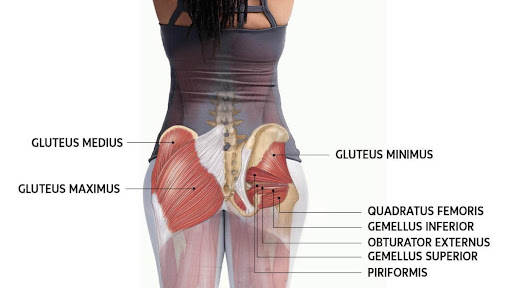It seems most young dancers are searching for the solution to improve their turnout, however aren’t seeing lasting results. Who has been guilty of sitting in front splits or “froggy” stretch for hours on end, in the hope of increasing turnout range, only to find no difference except irritation in the front of your hips?
Unfortunately, many young dancers don’t know how to achieve their turnout range safely and often just try harder to push into restricted ranges. Here are some tips to help you find the answer to your turnout problems.
Anatomy of the hip
The hip is a ball and socket joint, which allows for a great deal of movement. The placement angle of your acetabulum (socket) in relation to your femoral head (ball) will determine your ultimate turnout range. This means that some hips will naturally sit differently to others. When turning out, many dancers will blame this bony structure for their lack of turnout. However, the point of restriction is often found around the muscular structures. It is important to identify the exact muscles which are blocking your range, so that you can specifically focus on releasing that structure.
Are you using the wrong muscles to turnout?
 Many dancers grip their big buttock muscles (Gluteus Medius and Maximus) to try and hold turnout and find when they lift their leg, they’re unable to maintain their turnout range.
Many dancers grip their big buttock muscles (Gluteus Medius and Maximus) to try and hold turnout and find when they lift their leg, they’re unable to maintain their turnout range.
This is because your gluteal muscles are actually better designed for movement and stability, not for turnout! They can only perform one function at a time which means if they are turning out, they are not able to be movers and if they are being movers, they can not be used for turnout! If you are having difficulty maintaining turnout in raised leg position or having difficulty with gaining height with your jumps, it may be because you are using your movers for turnout muscles.
Where should my turnout come from?
Turnout comes from your deep external rotators (of which you have 6). These muscles act in different ways and ranges. Standing turnout is controlled mainly by quadratus femoris however en fondu, your piriformis is more in charge. This is why you may sometimes feel like you have turnout in some positions and not in others. That’s right, you have to train your turnout muscles in all dancing positions. Unfortunately, there is no one magical turnout exercise that fits all.
If any of these situations sound familiar, make an appointment today with our physiotherapist Alicia. She can help to identify the exact structures which may be restricting your turnout and tailor specific exercises to help gain your ultimate range!
If you are interested in dance, you should read our post on the 4 most common dance injuries.




